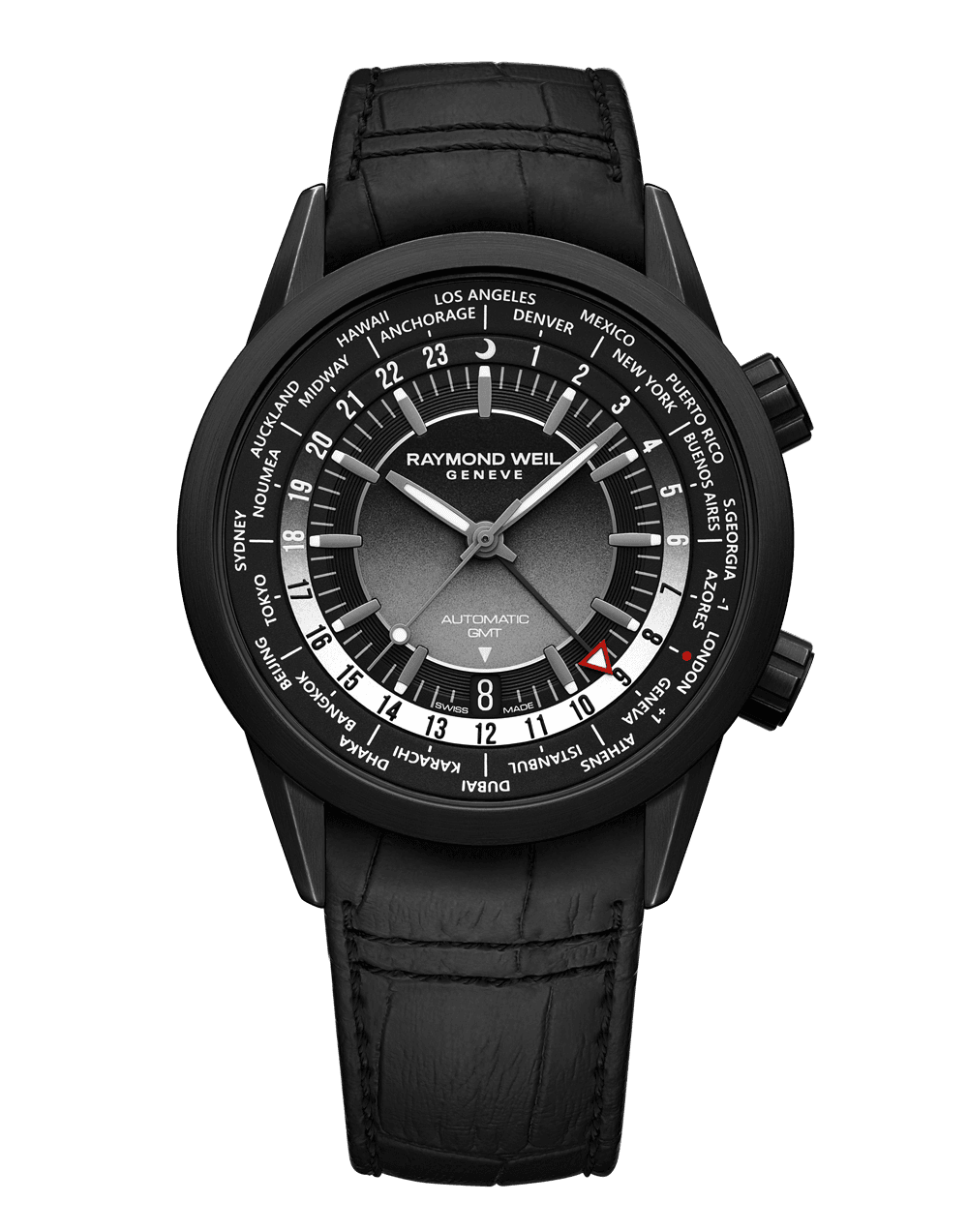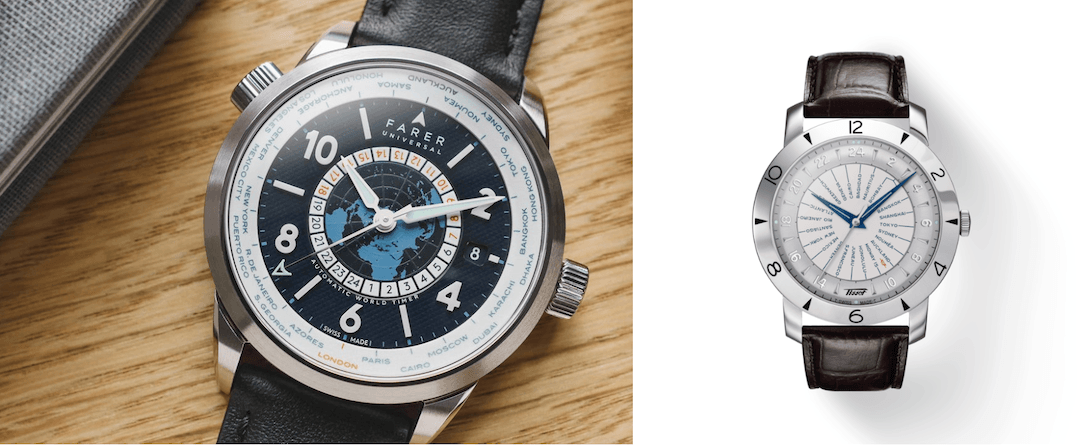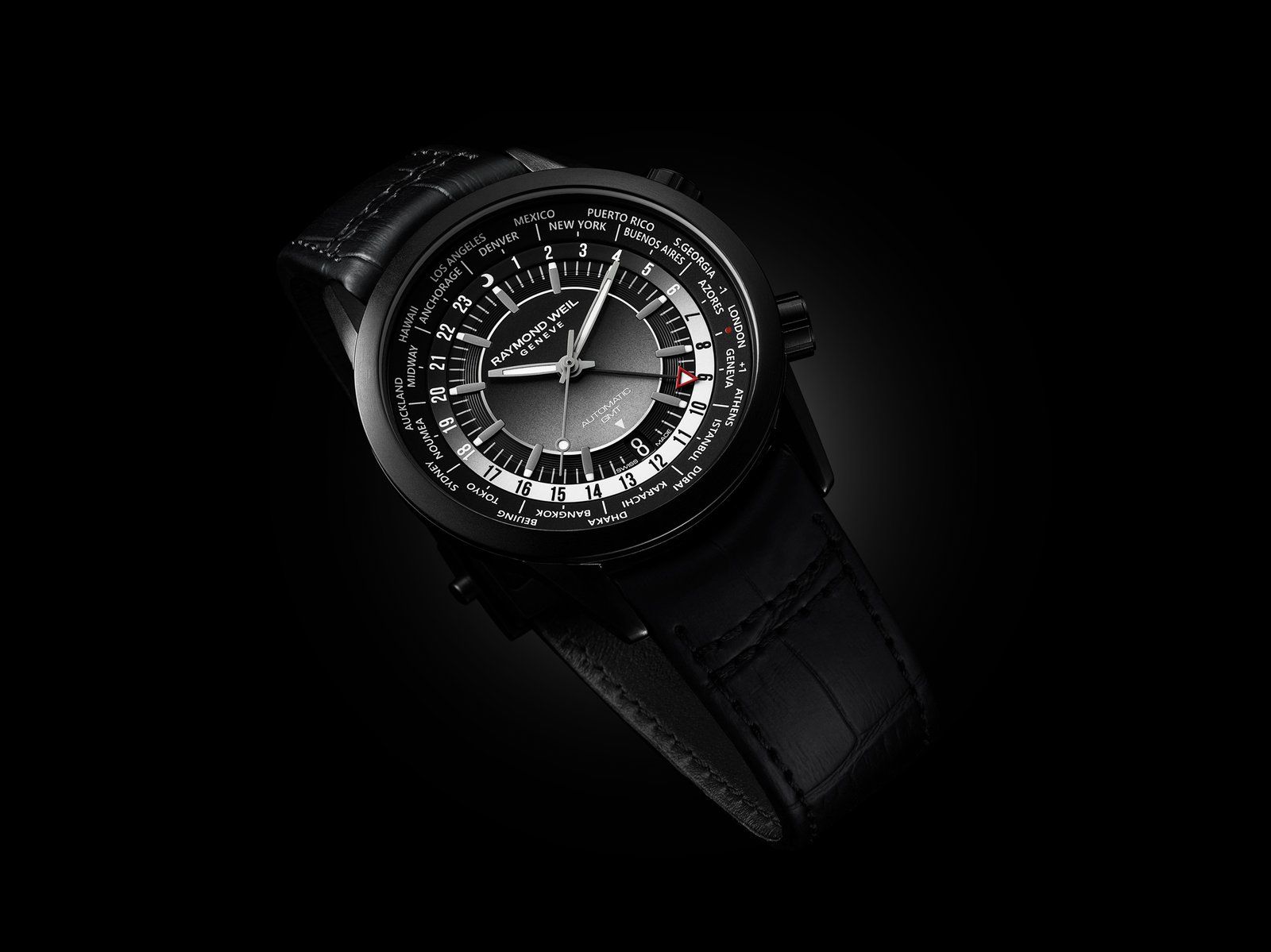Raymond Weil’s Freelancer GMT Worldtimer: A Direct Compete Or Missing The Mark?
Beyond the realm of chronographs and steel sport watches, we enter the world of the world timer, one of the more exotic and expensive reaches of many brands' offerings. World timers were once the pinnacle of unattainable luxury, a highly sought-after and extremely expensive vintage complication that is still prohibitively expensive even for new references. However, several new players have entered the market in recent years, making the complexity more accessible to the general public.
The world timer, in its purest form, is a traditional complication whose functionality can easily feel more aspirational than actual, because it is limited by an oversimplified impression of the world. They're a wink at the 20th century's limitless potential, its promise that innovation would make the world smaller, that travel would be simple and extravagant, and that we'd be able to track it all on our wrists in neat little 24 hour increments.
Truth of the matter: the bane of all romance, has once again brought us a world more complicated than we could have ever imagined. We now have to deal with nearly 40 time zones, instead of the original 24 proposed by Sir Sanford Fleming. Though I am a strong advocate for GMTs, I must admit that there is something incredibly sophisticated and romantic about a world timer. My interest in timepieces is what led me to Raymond Weil's latest release, the Freelancer GMT Worldtimer. This wrist companion hits just the right note, standing shoulder to shoulder with the likes of Longines, Farer, and Frederique Constant. Let’s dig deeper!
Although Raymond Weil has been around since 1976, its Freelancer collection (which debuted in 2007) is widely considered to be its most successful to date. Because of this, the Freelancer is Raymond Weil's most varied collection, including everything from straightforward three-hand dress watches to complex dive watches and chronographs. The Raymond Weil Freelancer GMT Worldtimer is the newest timepiece in the Freelancer series. It adapts the series' highly adaptable case shape to create a dual-crown GMT watch with an internal rotating worldtime bezel.
All Raymond Weil Freelancer models share a similar case design, which consists of a round body with long, angular lugs that feature notable facets running the length of their inner edges. The Raymond Weil Freelancer GMT Worldtimer has the same type of distinguishable lugs as the other models in the series; they are set 21mm apart and highlight two sets of spring-bar holes inside of them to offer approval for a greater range of straps; the case is based on stainless steel construction and measures 40.5mm in diameter by just 9.7mm in thickness with an overall lug-to-lug distance of 48.35mm.
The Raymond Weil Freelancer GMT Worldtimer has a flat sapphire crystal with anti-glare treatment on both sides to protect the dial, and a screw-down display caseback to help ensure users can submerge the watch to a depth of 100 meters. Additionally, a unique and aesthetically pleasing detail of the caseback is that the engravings are not located on the outer rim of the sapphire display window, but rather on a beveled rim that rests just beneath the surface of the crystal. This not only makes the caseback seem more spacious, but it also helps keep the serial number clearly legible by shielding it from daily use.
If your watch has a worldtime bezel instead of a GMT bezel, you'll need to unscrew the secondary crown every time you want to use the worldtime feature, so you can align the current city name with the hour hand. This crown only needs to rotate to provide access to the internal rotating bezel; it doesn't need any actual setting positions, and a non-screw-down crown for the bezel could have improved the watch's usability.
The Raymond Weil Freelancer GMT Worldtimer has a fairly information-heavy dial considering it is a date-displaying GMT watch that can show the time in 24 different cities simultaneously, but it is still easy to read and features a clean and elegant design that is neither overly formal nor utilitarian. The dial is segmented into a number of concentric circles, the central one housing the baton-shaped hour markers and printed minute track, and the outermost circles serving as chapter rings. This sub-dial is encircled by a 24-hour ring, and the internal worldtime bezel, which lists the 24 major cities, can be seen at the very edge of the display. A gradient pattern, with a darker upper half and a lighter lower half, is used on both the dial's central section and the 24-hour ring to help users approximate day and night.
Raymond Weil's Caliber 3230 automatic movement, which is based on an Elaboré-grade version of the widely used Sellita SW330-2, powers the Freelancer GMT Worldtimer. The Sellita SW330-2, widely used in high-end timepieces and as a base for third-party Swiss GMT movements, has a 24-hour hand that can be advanced independently of the date display by rotating the crown in either direction while in the second setting position. The Raymond Weil Cal. 3230 has a similar feature set, and its design is based on the tried-and-true SW330-2. It has a frequency of 28,800 vph (4 Hz) and a power reserve of around 50 hours.
I think worldtimers are a tough category for watchmakers to nail from an aesthetic perspective. A worldtimer watch, in theory, is more sophisticated than a dual-time model or a GMT timepiece. In addition to being more useful than a fancy feature like a tourbillon or minute repeater, the functionality itself practically demands to be housed in a model that is more robust than a traditionally styled dress watch.
The new Raymond Weil Freelancer GMT Worldtimer is a great example of a watch that successfully straddles the line between formal and relaxed. The black DLC and stainless steel/bronze versions of this watch are both listed at the same official retail price of $2,695 USD, putting them in the midst of Raymond Weil's price range between the brand's divers and chronographs. Given their position in terms of case and movement complexity, this makes perfect sense; and the new Raymond Weil Freelancer GMT Worldtimer, with its adaptable aesthetic, low profile, and wealth of features, is an attractive choice for anyone in the market for a high-tech worldtime watch that can be worn casually.


It's possible to find two alternatives to the Farer that are priced similarly: one by Tissot and another by Christopher Ward, both of which are British. The Tissot Heritage Navigator 160th Anniversary COSC is a cool and retro-looking world timepiece that is reasonably priced at $1,650.

What the Freelancer GMT Worldtimer lacks in pure functionality, it makes up for in spades in charm and eccentricity, making it the most reasonably priced worldtimer I've ever seen. The worldtimer isn't solely about travel, but rather scope, allowing you to tenderly contain a massive and complex world on your wrist. It encapsulates both the dream of global exploration and the promise of its simplicity.
No articles found










